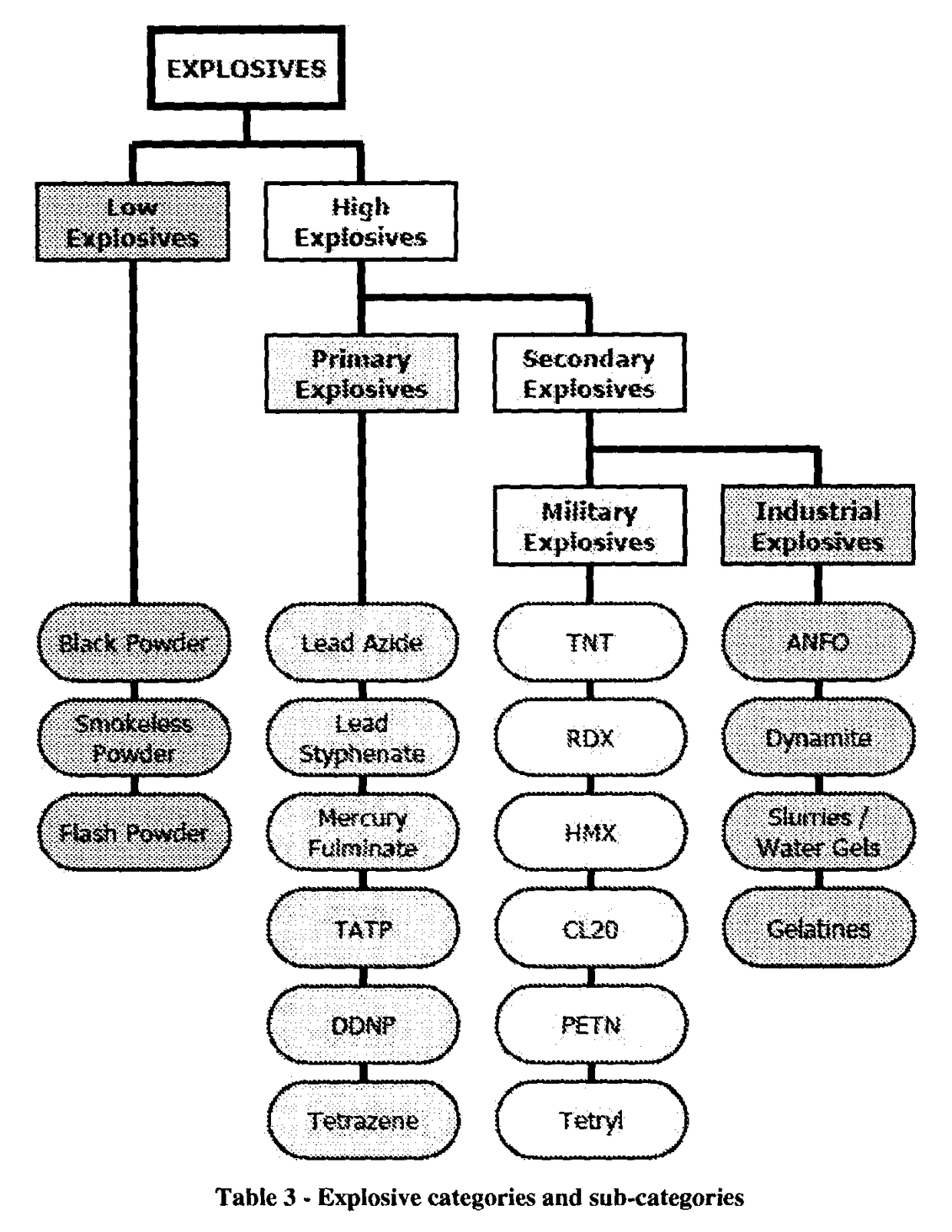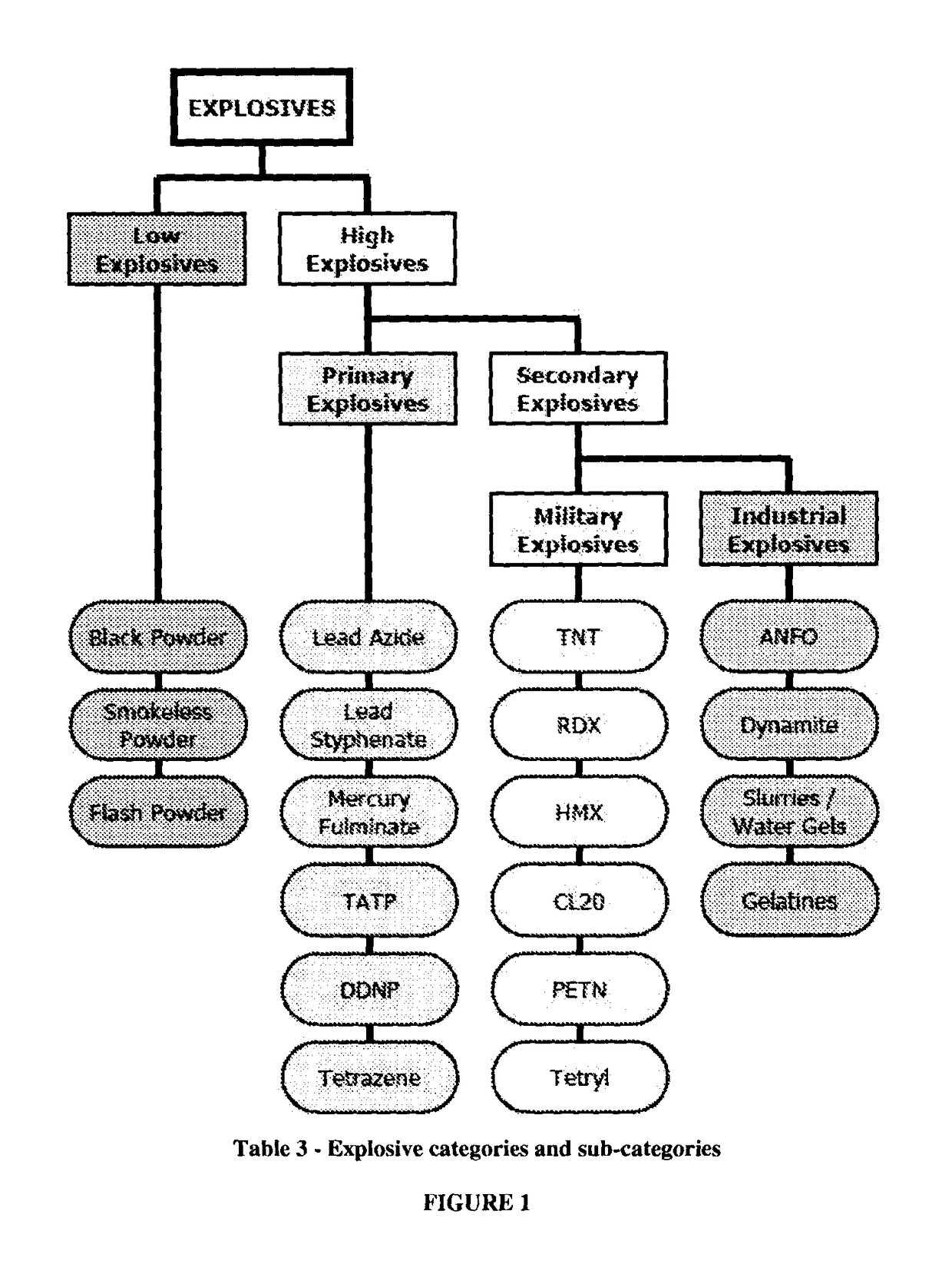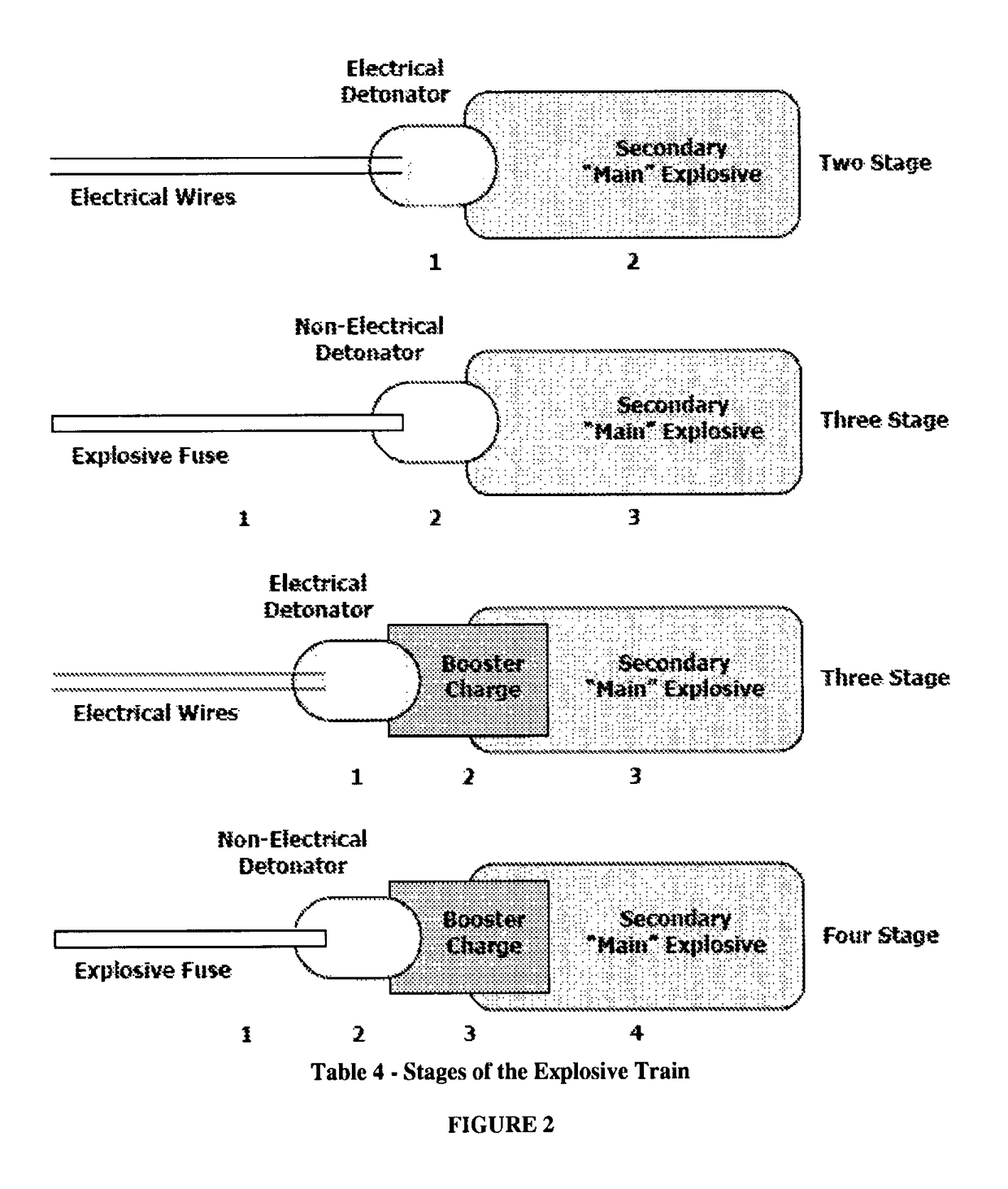Different manufacturers often choose different additives, resulting in the potential individuality of odor headspaces.
Primary explosives are unstable and require great precautions when handling.
The extremely low vapour pressures for many of the common explosives complicate the detection of these compounds directly.
First prepared back in 1841, the mononitrotoluenes have limited function as explosives due to their
oxygen deficiency, however they have found application as tagging agents, in addition to DMNB and EGDN due to their volatility and explosive properties.
RDX is suited to GC and
HPLC analysis, although it has a low vapour pressure and is susceptible to thermal degradation.
The
ester bond is not thermally stable, and GC analysis of the
nitrate esters is limited.
Its volatility represents a problem regarding cross
contamination during storage of explosives for canine training aids [10].
Also known as trinitroglycerin,
glycerol trinitrate was first prepared by Sobrero in 1846 but was deemed too sensitive and unstable to be of practical use until 1867 when Alfred Nobel proposed a desensitisation for commercial applications.
PETN is commonly used in
detonation cords and blasting caps, however outside of these applications is rarely used in its pure form due to its sensitivity to friction and
impact.
Its
high molecular mass and polymeric form make it unsuitable for analysis by GC or headspace methods, but TLC analysis has been successfully applied to differentiate NC samples [13,14].
TATP has a particularly high
brisance, and is sensitive to shock, friction and heat.
Its reactivity can be reduced by
wetting, but it remains extremely dangerous.
HMTD is less sensitive to shock
initiation than TATP, but is thermally unstable, and will detonate upon melting at 145° C.
Accordingly, GC analysis of HMTD is particularly difficult.
This introduces impurities and heterogeneity into the explosives, something which is welcomed by the trace analyst in the forensic lab but despised by experienced trainers wishing to imprint the optimum range of explosive odors onto the dogs.
The commercial explosives are generally less stable than military charges due to the less extreme handling conditions expected.
Instrumental methods, while they continue to improve, generally suffer from a lack of efficient sampling systems, selectivity problems in the presence of interfering odor chemicals and
limited mobility / tracking ability [24].
To date, there has been limited testing of these devices with noisy chemical backgrounds under operational conditions, however the handheld “FIDO”
system based upon
quenching chromophore amplifying fluorescent polymers (AFP) was recently field tested against certified
explosive detection canines for the detection of TNT based explosives, and was reported to share similar detection capabilities with canines [34].
Reports indicate that rats may be capable of detecting similarly low levels of explosive odors compared to dogs with advantages including their small size and low cost, but with more challenging training and retrieval aspects [37].
Since this method relies upon seepage of NO2 from leaking mines, it has the potential to miss the more recent models that are specially sealed to obscure detection.
Until recently, most data regarding optimal training protocols and the reliability of canine detection has been anecdotal, leading to successful challenges regarding the admissibility of evidence obtained with the assistance of canines and hampering the improvement of performance of canines as biological explosive detectors [40].
Challenges facing the field of canine detection include the limited ability to evaluate canine performance with standardized calibration standards.
Unlike instrumental methods, it is currently difficult to determine detection levels, perform a calibration of the canines' ability or produce scientifically valid
quality control checks.
To date, there are no definitive peer-reviewed studies to support any of these theories.
Recent reviews of electronic noses have highlighted the current limitations of instrumental methods with Yinon concluding that electronic noses for detecting explosives have a long way to go before being field operational [33] and Gopel concluding that, for most applications, the performance of electronic noses containing sensor arrays are insufficient compared to established analytical instruments such as GC / MS [29].
A recent extensive review of
instrumentation for trace detection of high explosives concluded that there is still no instrument available that simultaneously solves the problems of speed, sensitivity and selectivity required for the real time detection of explosives [24].
Unfortunately, there is currently little scientific information available to aid in the optimal selection of training aids.
Due to the challenges in handling and storing of a wide variety of explosives, non-hazardous training aids are commercially available, but with limited types available and limited testing of their effectiveness under
field conditions in double-blind studies.
The difficulty in choosing an optimal number of training aids lies in the multiple explosives within each category, and is then confounded by the wealth of explosive products that employ various combinations of the explosives, as highlighted in Table 8 and Table 7 [20,42].
However, there is scant peer reviewed data to demonstrate the utility of this practice.
The difficulty in selecting the optimal number and combinations of training aids can be highlighted by looking at the choice of a smokeless
powder training aid.
 Login to View More
Login to View More  Login to View More
Login to View More 


